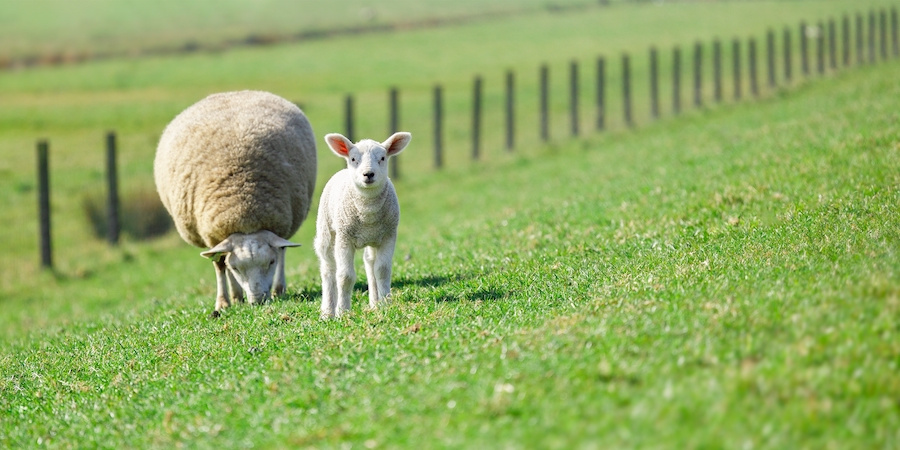How data boosted lamb survival at a Scottish farm
29th January 2024
When lambing losses were identified as a priority area for beef and sheep farmer Richard McCornick, recording losses effectively helped to highlight issues and boost survival. Richard shared his experiences at a recent farmer meeting.

Attendees at a recent Monitor Farm Scotland meeting in Castle Douglas heard how recording ewe and lamb deaths had helped identify issues on-farm, and prompted action to tackle them, as well as inspiring a new research project.
Meeting attendees heard that Dumfriesshire monitor farmer Richard McCornick and his family, who run the 200ha (500-acre) beef and sheep unit at Barnbackle, had used data to identify flock performance issues.
Sheep numbers have increased this year with 800 ewes and 150 ewe lambs to the tup this autumn, so there is a particular focus on improving performance.
The farm’s Integrated Land Management Plan, produced by SAC Consulting as part of the first year of this Monitor Farm programme, highlighted lambing losses as an area for attention.
Deeper investigation
As a result, a flock tally sheet recording losses on a whiteboard in the lambing shed helped the farm identify the main causes of loss. To tackle these, Richard is going to focus on ewe nutrition and health, colostrum quality and lamb immunity.
It has also led to a deeper investigation into colostrum quality and failure to transfer passive immunity from ewe to lambs.
The collaborative project between Monitor Farm Scotland, Livestock Health Scotland and run by The Stewartry Veterinary Centre and University of Glasgow, will involve a holistic approach, says vet and researcher Ali Haggerty, who is Barnbackle’s vet.
“We will be looking at ewe body condition score and nutrition, then sampling ewe colostrum and blood testing their lambs to see how that marries up, as well as investigating lamb deaths.”
The ultimate aim of the project is simple; to increase lamb survival rates, producing more lambs for sale, she says.
Lamb immunity and ewe nutrition
“The whiteboard at Barnbackle highlighted that quite a lot of the lamb losses were around lambing, from things such as watery mouth or joint ill. Lambs are born
without any antibodies, so they rely on that first few hours of receiving colostrum from their mother for immunity to disease in the first few weeks of life. We think that if we can look at improving their immunity, we will have more, healthier lambs on the ground.”
While she cautions that the study will only be a snapshot in time, she says there are some key areas of focus.
Looking at ewe nutrition will be key, assessed through consistent body condition scoring throughout the year and metabolic profiling at key times, particularly two to three weeks before the start of lambing.
This will look at whether the available feed is adequate and being utilised fully by ewes. This is vital to produce enough high quality colostrum to feed their lambs in the first few hours of life.
“The lamb’s gut is only permeable to the antibodies from colostrum for the first six to twelve hours of life. By 24 hours old, the channels in the gut wall have closed completely, so colostrum at that time will not be absorbed into the body and provide local gut immunity at best.
“It’s also a high fat product, which is crucial for lambing outside – providing energy to keep warm. There is a lot in it to give lambs the best start, so proper colostrum management is important,” she says.
Taking colostrum samples from ewes, and later, blood samples from their lambs will assess whether the lamb has adequate passive transfer of immunity. All of that data, plus details of the ewe and her lambing performance collected by vets and vet students, will be collated, with results expected to be available in early summer.
“We aren’t changing too much on the farm this year and in the run up to lambing as we want to capture what is going on and to be able to assess that. While Richard lambs indoors, I expect some aspects of the results to be equally applicable to outside lambing, and I think it will focus attention on just how important colostrum is.”
Read more livestock articles here



